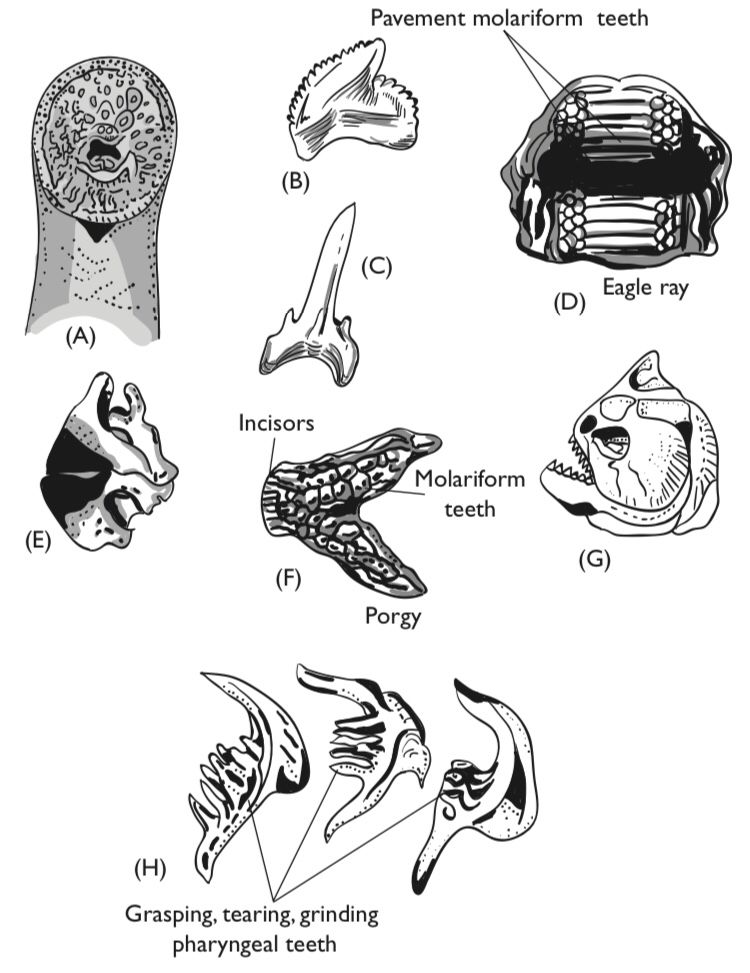Living Agnathan fishes possess conical, rasping tooth-like structures made of keratin, the same structural protein found in human hair and nails, on their tongue, rather than enamel covered, bony teeth typical of other vertebrates. The lamprey also has similar teeth around its mouth. They also have no identifiable esophagus or stomach. The intestine is straight with little regional differentiation, although parasitic/predatory lampreys have a single fold (typhlosole) that runs in a spiral along the length of the intestine increasing the absorbent surface.

In non-parasitic lampreys such as the North American and British brook lampreys (Lampetra appendix and Lampetra planeri respectively), some North American species of Ichthyomyzon, and the southern hemispheric Mordacia praecox, the larval stage persists for several years as a filter feeder and following metamorphosis the adult digestive system is non-functional and no food is consumed from when they metamorphose until they spawn and die one-half year later. An intermediate condition is found in the non-parasitic Caspian Sea lamprey, Caspiomyzon wagneri. Ammocoete larvae live in bottom deposits and feed on diatoms and detritus, however, adults feed on algae and higher plants as well as scavenging dead fish and are known to attach themselves to trout, presumably for transport.
Jawed fishes possess many types of teeth both in their jaws and elsewhere in their mouth cavities. Jaw teeth located on the premaxillary, maxillary, and mandible (dentary) are used for biting, grasping, shearing, rasping, or scraping. Depressible teeth allow food to move into the mouth but not outwards. Many fish possess only small pointed teeth suitable for immobilizing prey while relying on suction mechanisms to finish the job of prey ingestion. Barracuda and similar predatory species possess large, shearing teeth that cut their prey nearly in two, allowing it to fold for easier ingestion. The bladelike teeth of predatory sharks are justifiably celebrated for their ability to remove “chunks” of flesh from large victims (Williams, 2001).
In addition, or sometimes instead of jaw teeth, many fish possess teeth on their tongue or the roof of the mouth (palatine and vomerine teeth), which also help hold food and direct it to the esophagus. One entire major group of fish derives its name from the presence of teeth on their tongues; the Osteoglossomorpha, a name which translates as “bony tongues.”
Pharyngeal teeth located on, above, and below the pharyngeal arches are important for shearing or crushing prey. They often occur in fish that otherwise lack teeth, such as carps, minnows, and suckers; however, many families such as parrot fish, cichlids, and drums possess pharyngeal teeth in addition to well developed jaw teeth. As illustrated by drums that feed on hard-shelled mollusks, the form of pharyngeal teeth may change with growth, cardiform teeth found in small fish which feed on softer-bodied prey are replaced by villiform teeth, which in turn are replaced by heavy molariform teeth as the size clasas of drum and the hardness of their favored prey increases.


